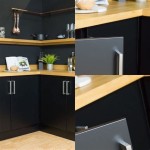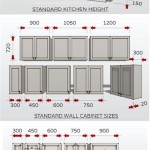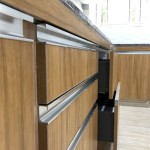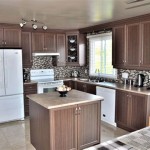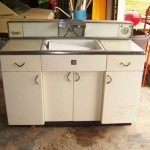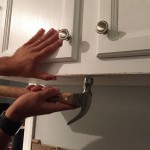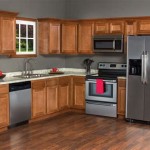Standard Size of Kitchen Cabinet Handles: A Comprehensive Guide
Choosing the right hardware can significantly impact the overall aesthetic and functionality of a kitchen. Cabinet handles, in particular, play a crucial role in both the visual appeal and the ease of use of cabinetry. Understanding standard sizes and measurements is essential for making informed decisions during a kitchen remodel or update.
Key Considerations for Choosing Cabinet Handles
Several factors influence the selection of appropriate cabinet hardware. Consider the following:
- Cabinet Style: The style of the cabinets, whether traditional, modern, or transitional, will dictate the type and size of handle that best complements the overall design.
- Drawer and Door Size: Larger drawers and doors generally require larger pulls for proper balance and functionality.
- User Comfort: The handle size should provide a comfortable grip for users of all ages and abilities.
- Overall Design Harmony: Hardware should complement other design elements in the kitchen, such as faucets, lighting fixtures, and appliances.
Standard Sizes for Knobs
Knobs offer a classic and versatile option for cabinet hardware. Common sizes include:
- 1-1/4 inch diameter: This is a popular size for smaller cabinets and drawers.
- 1-1/2 inch diameter: A versatile size that works well on most standard-sized cabinets.
- 1-3/4 inch diameter and larger: Often chosen for larger drawers, cabinets, and furniture pieces where a more substantial look is desired.
Standard Sizes for Pulls
Pulls provide a more substantial grip and are often preferred for larger drawers and cabinets. Measurements typically refer to the center-to-center distance between the screw holes, also known as the drill centers. Common sizes include:
- 3 inches center-to-center: A standard size suitable for smaller drawers and cabinets.
- 3-3/4 inches center-to-center: A versatile size that works well on a wide range of cabinet sizes.
- 4 inches center-to-center: A common size for larger drawers and cabinets.
- 5 inches center-to-center and larger: Often preferred for very large drawers, pantry doors, and appliance pulls.
Measuring for Cabinet Hardware
Accurate measurements are crucial for ensuring proper fit and functionality. Follow these steps to measure for new cabinet hardware:
- For Knobs: No specific measurement is required beyond considering the overall scale of the cabinet or drawer.
- For Pulls: Use a ruler or measuring tape to determine the precise center-to-center distance between the existing screw holes. If drilling new holes, consider the size of the drawer or cabinet and the desired placement of the pull.
Material and Finish Considerations
A wide variety of materials and finishes are available for cabinet hardware, each offering distinct aesthetic qualities and durability. Popular choices include:
- Stainless Steel: Known for its durability, resistance to corrosion, and modern aesthetic.
- Brushed Nickel: Offers a softer, warmer look than stainless steel and is also highly durable.
- Oil-Rubbed Bronze: Provides a rustic, antique look that complements traditional and transitional kitchen styles.
- Brass: A classic choice that adds a touch of elegance and warmth.
- Chrome: A highly polished and reflective finish that offers a sleek, modern look.
Importance of Proper Installation
Proper installation is essential for the functionality and longevity of cabinet hardware. Key considerations include:
- Using the Correct Screws: Ensure the screws provided with the hardware are the appropriate length and type for the cabinet material.
- Pilot Holes: Drilling pilot holes before installing screws prevents splitting the wood and ensures a secure fit.
- Tightening Screws Properly: Screws should be tightened firmly but not over-tightened, which can damage the hardware or the cabinet.
Choosing Hardware for Different Cabinet Styles
Different cabinet styles are often best complemented by specific hardware styles and finishes. Consider these pairings:
- Traditional Kitchens: Classic knobs and pulls in oil-rubbed bronze, brass, or antique pewter.
- Modern Kitchens: Sleek, minimalist bar pulls in stainless steel, brushed nickel, or chrome.
- Transitional Kitchens: A blend of traditional and modern styles, often incorporating both knobs and pulls in finishes like brushed nickel or polished chrome.
Budgeting for Cabinet Hardware
Cabinet hardware can range in price from a few dollars per piece to significantly more for high-end designer options. It is important to factor hardware costs into the overall budget for a kitchen remodel or update. Consider the quantity of hardware needed, the desired materials and finishes, and the overall project budget when making selections.

How To Choose Hardware Pull Size For Your Cabinets
Cabinet Hardware Sizing Guide The Knobbery Door Bath Accessories Faucets Furniture Knobs And Pulls

Hardware Guide
How To Choose The Best Size Pulls For Your Cabinets Trubuild Construction

The Right Length Cabinet Pulls For Doors And Drawers Porch Daydreamer

Comprehensive Guide To Cabinet Hardware Size Placement Handles More
Cabinet Hardware Sizing Guide The Knobbery Door Bath Accessories Faucets Furniture Knobs And Pulls

The Right Length Cabinet Pulls For Doors And Drawers Kitchen Hardware

A Simplified Guide To Understanding Standard Handle Sizes House

Comprehensive Guide To Cabinet Hardware Size Placement Handles More
Related Posts


